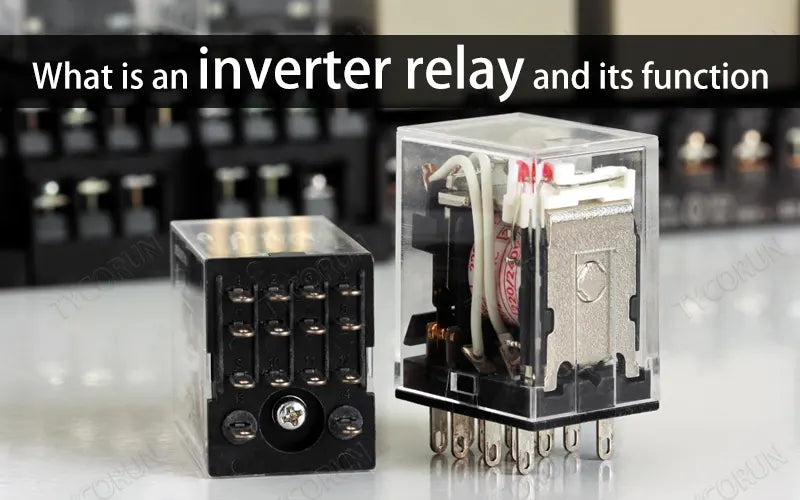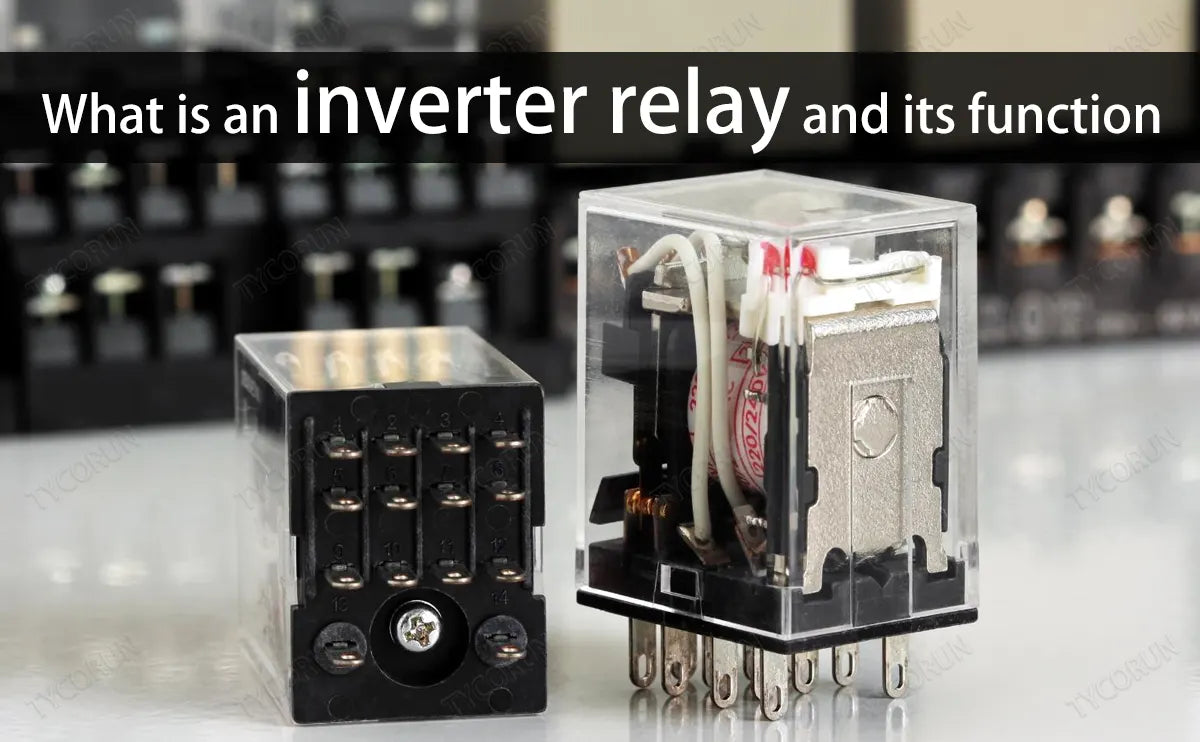
Main content:
A relay is a commonly used electrical component used to switch circuits, convert circuits, or control motors, etc. in circuits. Its main structure consists of coils and upper and lower fixed contacts.
When the coil is energized, an electromagnetic field is generated, which causes the upper and lower ends of the coil to attract or repel each other, thus achieving the effect of switching circuits. Inverter relay can be used for protection, and this article will introduce it.
1. What is an inverter relay
The inverter relay is mainly used to control the output of the DC power supply, the switching of the load and the protection of the circuit. Therelay inside the inverter generally controls the inverter switch state through a signal line connected to the controller.
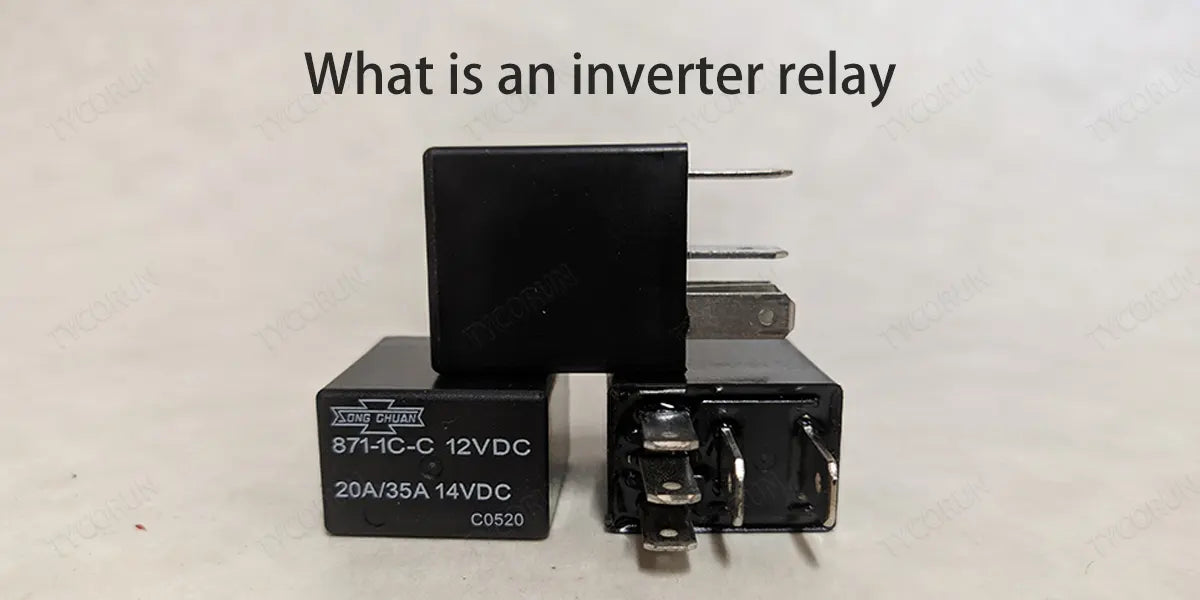
That is, in an inverter circuit, the inverter relay signals to the controller to tell it is time to turn the load circuit on or off. This protects the inverter and the load, as well as the safety of people.
2. How inverter relays work
Inverter relay is an important component in the control circuit of electrical equipment such as motors, generators and transformers, and has the function of switching circuits.
When the external circuit inputs an electrical signal, the electromagnet inside inverter relay is controlled to make the contacts inside the relay open or closed, so as to realize the switching control of the circuit and maintain a stable state. Relays generally have higher electrical insulation properties and are more stable than electronic devices when controlling high power.
3. What is the classification of inverter relays
Relays also play an important role in the circuitry of the 2000w inverter. There are two main types of inverter relays: contact relays and solid state relays. Contact relays are made on or off by mechanical contacts inside the relay.
Most inverters use this type of inverter relay, which is suitable for controlling small loads, but the contacts are prone to scorching and wear, and need to be serviced and replaced regularly.
Solid-state relay is controlled by electronic components with no mechanical parts, good stability, long life, suitable for the control of high-power loads, but the price and cost are higher.
4. The role of relays on PV inverters
- Input protection
Photovoltaic inverters need to be input protected against DC output from high efficiency solar panels. In order to prevent damage to the inverter due to short-circuit or overvoltage of the battery board. In this case, a inverter relay can be used as an input protection switch.
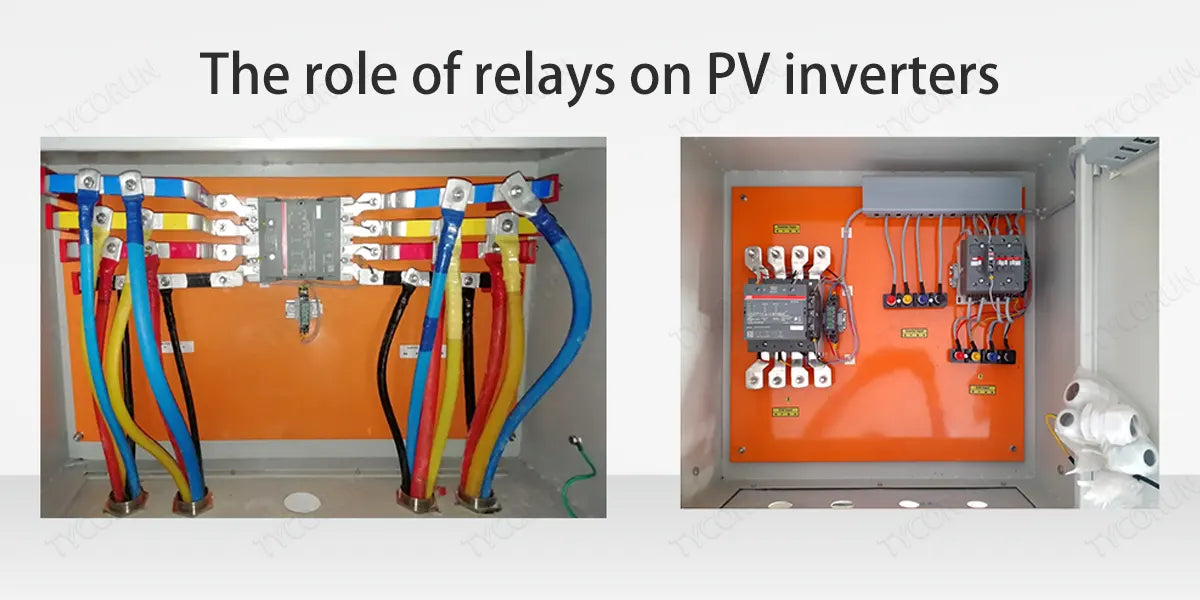
- Output protection
The output of the PV inverter needs to be connected to the grid, and the output current needs to be filtered through the filter circuit. In order to ensure the stability and purity of the output current, the inverter relay can be used as the output protection switch.
- Power recovery in case of failure
When the PV inverter is powered off, the inverter needs to be restarted after the power is restored, and the inverter relay can be used as a power failure restorer at this time.
- Isolation controls
The PV inverter needs to isolate the direct current output of the panel from the alternating current of the grid to avoid interference of the panel to the grid, and the inverter relay can be used as an isolation switch.
It can be seen that inverter relays can greatly reduce the risk of inverter hazards. As a result, many countries require inverters to be equipped with relays in PV standards and regulations. In European countries, grid codes often require PV systems to support grid stability and security, providing features such as remote disconnection.
5. How to tell if a microinverter has a built-in relay
- Dismantling check
The most intuitive way to confirm whether a solar microinverter has a built-in relay is to disassemble it for inspection. By disassembling the microinverter, the user can check the internal zeros to confirm the presence of the inverter relay. However, it should be noted that this method may void the warranty, so it is not recommended for non-specialists.
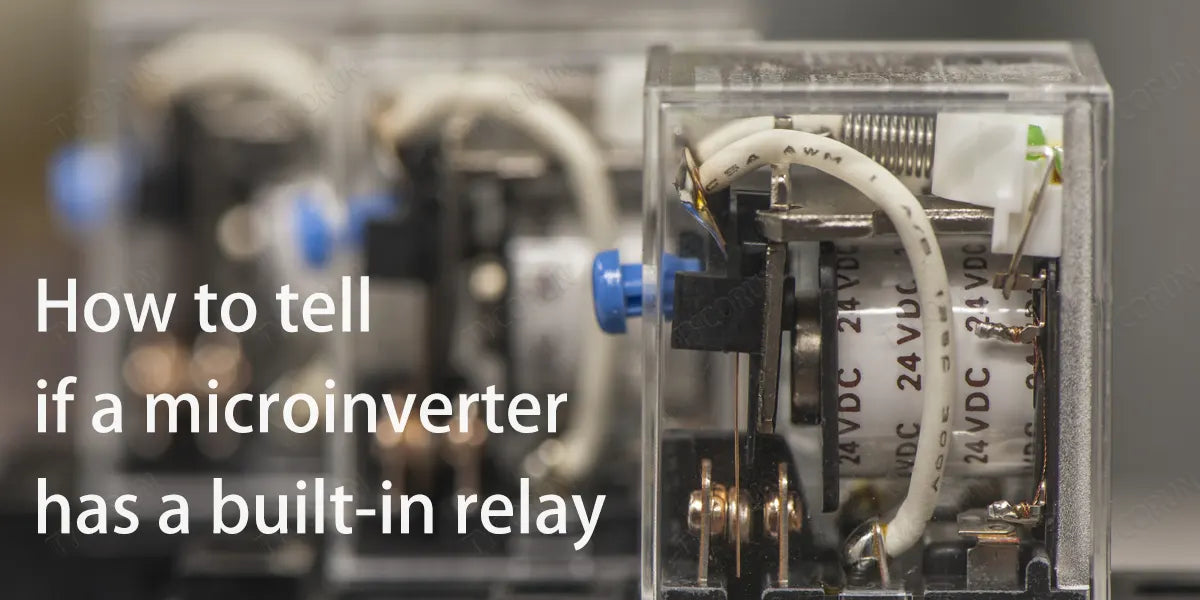
- Auditory recognition
Microinverters equipped with relays emit a specific "click" sound while operating. These sounds usually appear about 1 minute after the microinverter is turned on, and the exact time varies from country to country. In Germany, for example, the sound of a relay turning on usually appears about 85 seconds after the machine is turned on.
Different models of microinverters may also emit different numbers of rings. With this sound recognition, the user can tell if the microinverter has a built-in relay without destroying the machine. According to the requirements of the regulations, the PV inverter needs to place 1~2 sets of relays on its output side, that is, the AC side.
The function of the relay is to cut off the connection between the inverter and the power grid when the inverter does not work or fails, so as to ensure the safety of personnel and equipment. When the relay fails, the inverter stops connecting to the grid or reduces the output power.
Therefore, in order to ensure the efficiency of the power station and the safety of personnel, the fault should be eliminated and dealt with in time when the relay fails. Here, we introduce the troubleshooting and handling of relays.
6. Causes of inverter relay failure
If the 3000w inverter detects that the inverter relay is abnormal, it means that the detection voltage comparison of each detection point of the inverter relay is abnormal.
The cause of the abnormality may be that there is a phase wire grounding on the AC side or a virtual connection of the AC wire, or it may be an alarm caused by the abnormality of the inverter relay detection circuit or the relay itself.
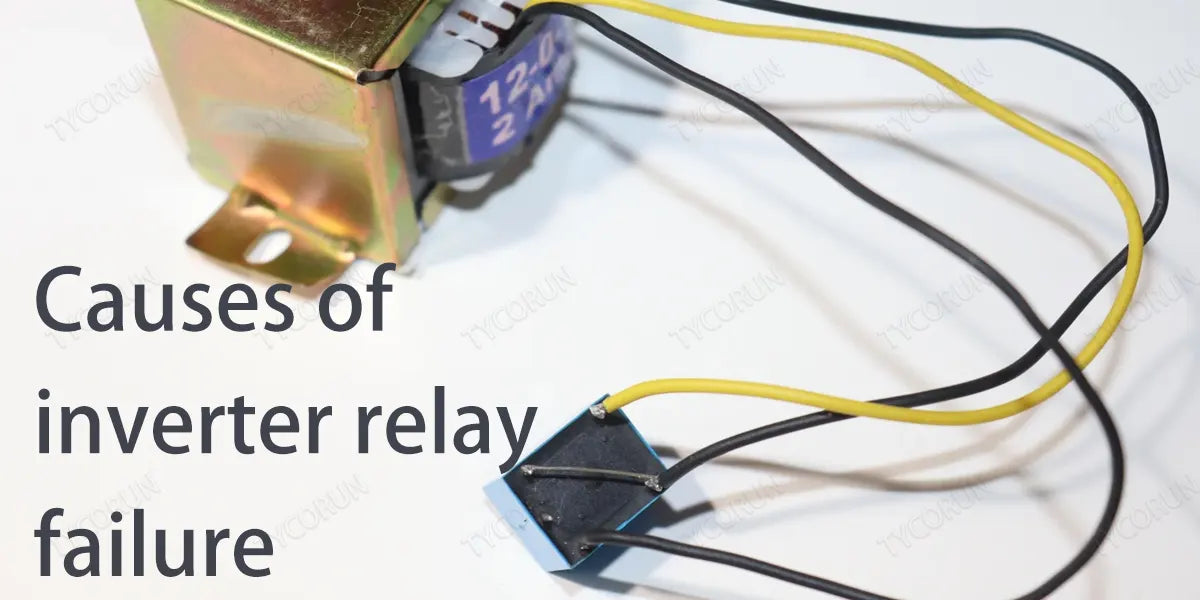
Troubleshooting steps:
- Disconnect the AC and DC inverters from the inverter and wait 5 minutes, restart the inverter and reconnect to the grid to see if it can be connected to the grid normally.
- Check whether the AC side wiring is reliable, and if there is loose wiring, re-tighten the line to see if it can be connected to the grid.
- Use the AC file (AC) of a multimeter to measure phase-to-ground voltage.
If the voltage is less than 100V, it can be judged that there is a grounded phase line, and it is necessary to check from the AC output side of the inverter to the grid side step by step, determine the grounding point and eliminate it, and reconnect it to the grid.
If there is no phase wire grounding, you can contact the technician to temporarily turn off the relay detection function. Then try whether it can be connected to the grid. If the inverter is not connected to the grid or can be connected to the grid, but the AC output current is abnormal.
There is a problem with the relay and it needs to be repaired. If the inverter alarms frequently in a short period of time, it may report a relay failure due to frequent pick-up and disconnection of the relay. In this case, it is necessary to troubleshoot as soon as possible to avoid the service life of the relay due to frequent pick-up and disconnection.
7. Conclusion
Although relays are small parts of power stations, their role should not be underestimated. If the inverter relay fails, the cause of the fault should be investigated and dealt with in time to ensure the safety of personnel and the revenue of the power station.
By understanding the working principle and classification of inverter relays, we can better understand the circuit structure and working principle of the inverter. In the process of selecting an inverter, it is recommended to choose an inverter that uses a solid state relay as much as possible to improve the reliability and stability of the equipment.
Related articles: top 10 solar inverters, off grid solar batteries, AC coupling vs DC coupling


